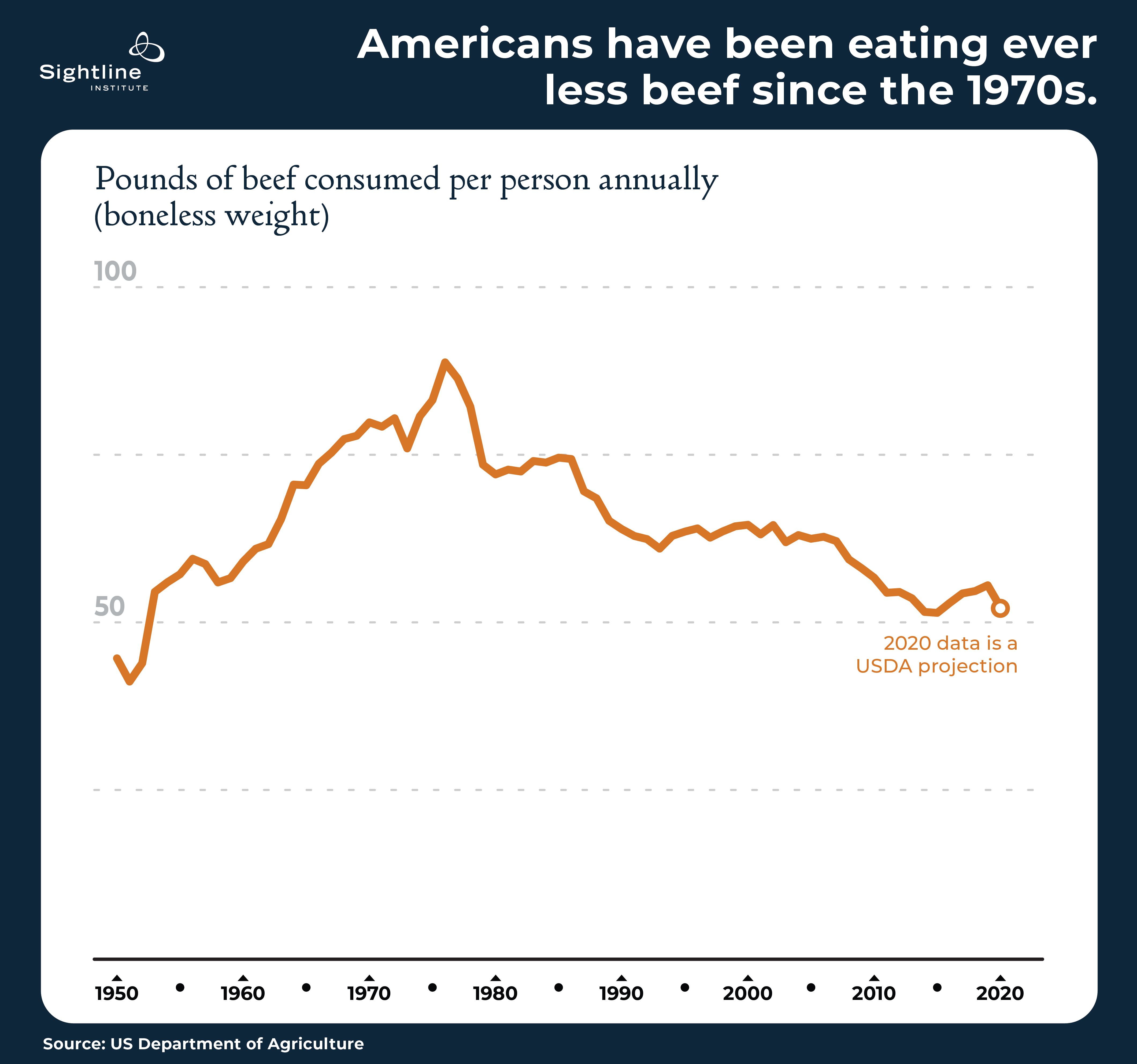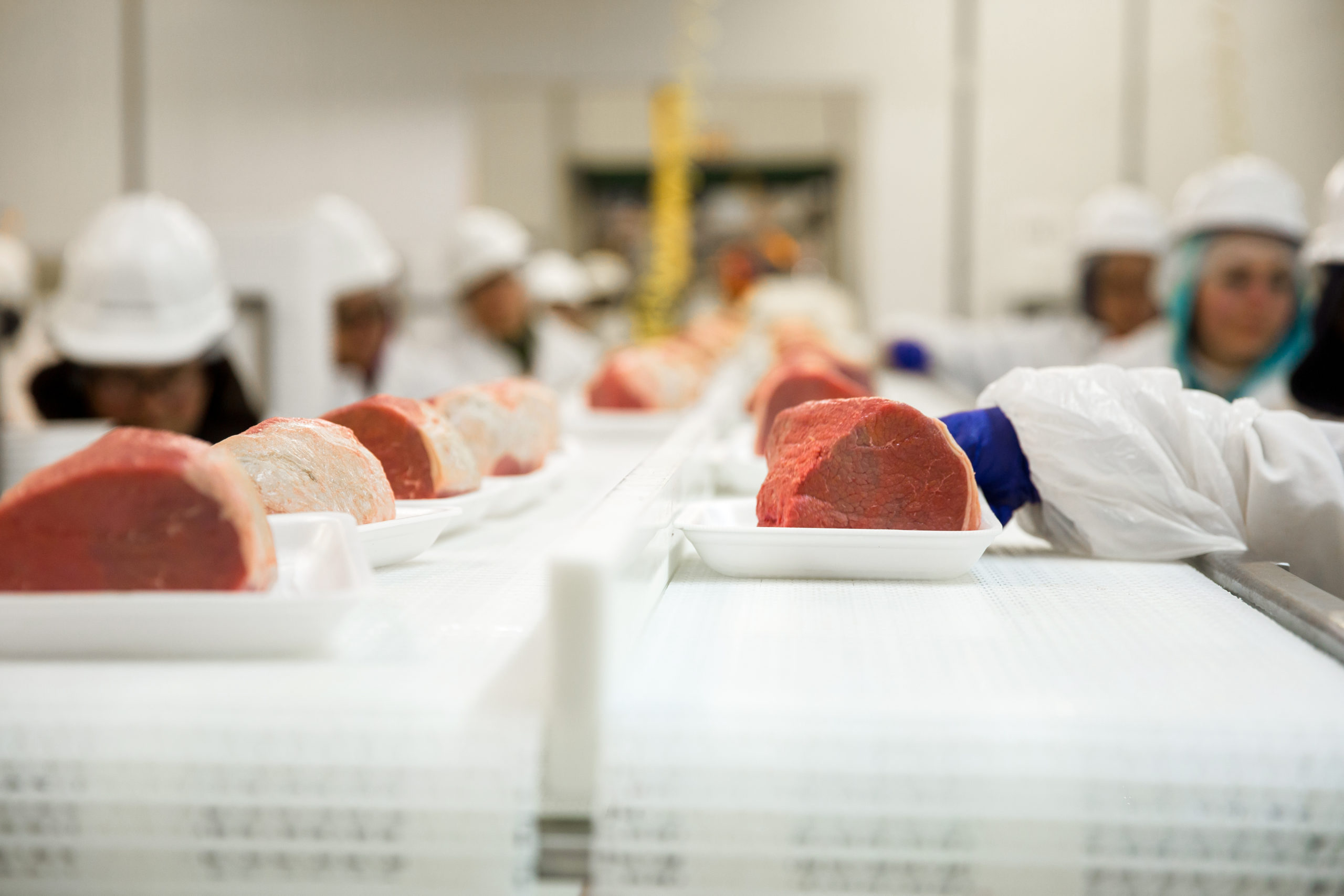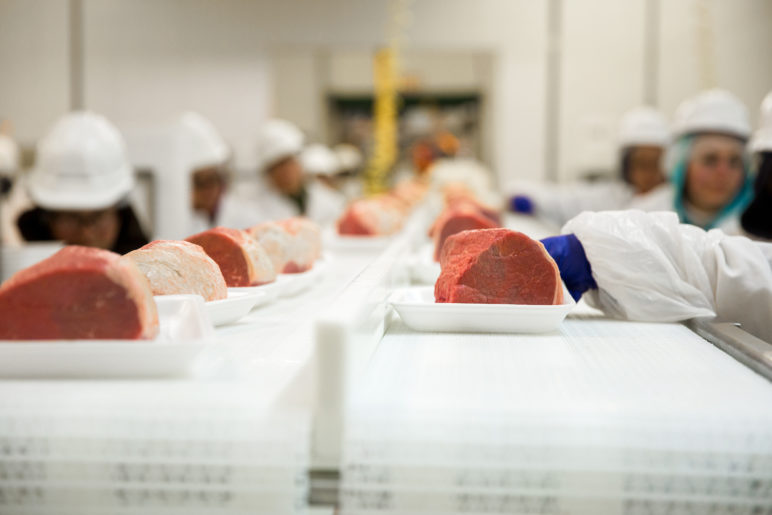In the previous installment in this series about things that are already in decline and will, I hope, die or diminish markedly in the pandemic, I made the case against handshakes, junk mail, and the hegemony of fossil fuels
Like junk mail, beef is taking another downward step on a descent already underway in the United States. And just as preexisting forces and the pandemic are accelerating junk mail’s decline, so, too, are they knocking beef consumption down to what may prove to be a new, lower level. In percentages, the reduction in beef eating seems less dramatic than the mail fall-off, but its stakes are much larger.
Cheap factory-farmed, saturated-fat-laden beef is no one’s health food, and it’s a major-league problem for the climate. As author Jonathan Safran Foer noted, “If cows were a country, they would be the third-largest greenhouse gas emitter in the world.” In climate impacts, beef is by far the worst thing we eat regularly. Measured per unit of protein, beef’s carbon footprint is six times worse than that of chicken, 15 times worse than that of tofu, and almost 70 times worse than beans’ or peanut butter’s footprint. So the most important diet change we can make is to replace beef with plant-based foods or, at least, chicken.
Fortunately, since the mid-1970s, Americans have been eating less beef. After peaking at almost 89 pounds per person in 1977, beef consumption has dropped in three uneven steps, as shown in the the figure.
The pandemic blindsided the meatpacking industry with idled restaurants and mobbed grocery stores. Then it leveled the industry with some of the highest workforce coronavirus infection rates anywhere. Next, it whiplashed the industry with supply chain pileups that left consumers facing empty grocery-store meat cases and soaring prices and animal farmers (many of them deeply in debt) facing the traumatizing necessity of euthanizing thousands of their own animals for lack of places to sell their meat.

American consumption is on the decline. Will COVID-19 take cheap beef out for good?
Unpredictable effects on the industry and its workers and their communities will reverberate for months, but one likely outcome is a fourth downward step in US beef consumption. The US Department of Agriculture (USDA) conservatively projects a 6 percent reduction in per-person beef consumption in 2020. In April, output was down by one-fifth from April 2019. If the USDA is right, per-capita consumption of beef will fall to 52 pounds this year—or one pound per week. Aside from a brief period five years ago, the last time Americans ate only a pound of beef a week was 1952.
Thinking optimistically, after the pandemic, a subtle society-wide increase in the sense of solidarity with essential workers, manifested in new workplace policies, might sustain these precautions and working conditions, keeping costs up and consumption down. But even if it does not, circumstances will not favor beef. They will favor chicken. Chicken processing plants rode out lockdowns more easily because they are more automated than beef-packing plants. They are also easier to automate further. Add to that the lower price of chicken and the deep recession already gripping North America, and chicken will probably continue to displace beef.
It seems unlikely that this downdraft in beef eating is merely a passing moment. Beef supplies and prices will not return to their pre-COVID levels until a cure or vaccine is available. Meatpacking plants, along with assisted-living facilities and prisons, are now the principal pandemic hotspots in North America. As of July 24, 2020, the COVID-19 case count among US meatpacking workers was more than 37,000 including around 168 deaths. (This map shows the plants and their case counts.) Inevitably, beef plants will continue to run their lines more slowly, with fewer and better-separated workers and with more health precautions in place. And higher production costs and smaller output mean higher beef prices.
Meanwhile, meat substitutes such as Impossible Burger, which were already logging milestones like a Burger King debut in 2019, have seen demand surge during the pandemic. The venture-funded enterprises behind Impossible Foods are still lilliputian compared with Tyson Foods and other Big Meat players, but they are well positioned to survive and grow through the crisis. In the very long run, plant-based or lab-grown meats may be a more-permanent threat to beef than is chicken because science could ultimately make them more-convincing body doubles for beef, not to mention healthier, more humane, and perhaps even more affordable.
In terms of climate impact, beef is to other meats what coal is to other fossil fuels: the worst offender in a gang of thieves.

In terms of climate impact, beef is to other meats what coal is to other fossil fuels: the worst offender in a gang of thieves. Just as natural gas (“fracked gas” is the more accurate moniker) was the competitor that started the dethroning of King Coal in the electric-power sector but is now struggling to compete with clean-power sources like wind and solar, chicken is the alternative that’s taken over the most plate space from beef but is now facing smaller-footprint competition. So far, plant-based meats remain expensive curiosities and minor players, like wind power was in the 1980s. Chicken, like fracked gas, is not a clean-and-green alternative, but like gas, it’s greener, at least in some ways. Like gas, chicken may eventually start losing ground to truly sustainable alternatives as vegetarian diets and meat alternatives gain more traction. In short, chicken could be a bridge food.
In a 2018 Gallup poll, some 5 percent of the US population reported being vegetarian. Vegetarianism is poised to grow because it’s more prevalent among expanding demographic groups. Just 2 percent of people over age 55 called themselves vegetarian, but 8 percent of people ages 18-35 did; and only 3 percent of whites described themselves as vegetarian, compared with 9 percent of people of color. So as more-diverse, meat-lite Gen Xers and millennials displace baby boomers over time, beef consumption will likely continue its stepwise decline. And the coronavirus may be initiating the next downward step.
Beef has never been cheap for health or the environment. It will survive the pandemic, no doubt, but its price will be higher than before. And that’s a hopeful future: a future without cheap beef.











Daniel Weise
We recently found Impossible Burger in our local Safeway and tried it (our family hasn’t done beef in well over a decade). It’s still not a health food, but it really does fake out beef. Check it out!